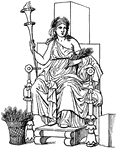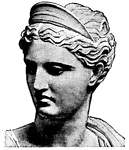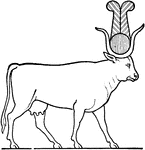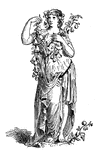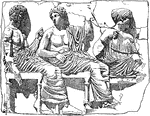Clipart tagged: ‘Goddess’

Aegean Snake Goddess
The sculpture of an ancient Snake Goddess. The artifact demonstrates typical Minoan female attire.

Roman Arm-Chair
The Roman Arm-chair had a decoration symbolic of Ceres, the Roman goddess of growing plants.

Mourning Athena
"A tablet of Pentelic marble. Athena, leaning on her spear, is gazing with downcast head at a grave…

Statue of Bavaria
The Statue of Bavaria is a bronze-cast statue of a female figure representing Bavaria's "secular patron…
Hathor's Column
An illustration of a column with a craving of Hathor. In Egyptian mythology, Hathor (Pronounced Hah-Thor)…
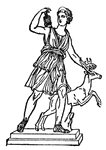
Diana
Diana was a goddess of the Romans. She was the daughter of Zeus and Leto, twin sister of Apollo, and…
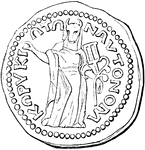
Emblem of Ash'Toreth
An image of Ash'Toreth, or Ash'Taroth, who was called Astarte by the greeks. She was commonly known…
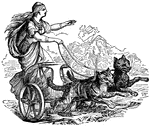
Freya
"Once on a time, when the gods were contructing their abodes and had already finished Midgard and Valhalla,…
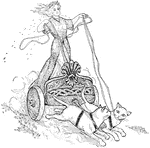
Freya Searching for Odur
Freya searches for her husband Odur in her chariot drawn by two white cats. As she rode, she cried golden…
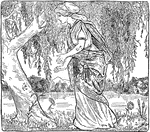
Frigga Asking a Tree
In Norse mythology, Frigga's son, Baldur the sun god, has a dream that he will die. Frigga travels the…

Egyptian God, Typhon
Typhon was he wife of Anubis, God of Darkness. Typhon is also known as the Terrible One.

Group of Gods and Goddesses
"The chief gods, in striking contrast with the monstrous divinities of the Oriental mythologies, had…

Hulda and the Shepherd
Hulda, the Norse goddess of spring sits on the throne in her cave. A shepherd finds this cave and as…

Gate of the Lions
The Gate of the Lions is located in Mycenae, Greece. It was the entrance to the city. On top of the…

Loki as a Fly on Freya's Cheek
Loki, the mischief maker, turns into a fly to steal Freya's golden necklace. As Freya, the goddess of…

Medal of Smyrna
A medal of Smyrna depicting Ceres, the goddess of plenty. The reverse side of the medal shows Jupiter…

Minerva
"The name of a Roman goddess, identified by the later Graecising Romans with the Greek Athene, whom…

Temple of Neptune
"Paestum, the Greek Poseidonia, was a colony of Sybaris. The malarial atmosphere of the place led to…
Column from the Temple of Denderah, with Hathor Masks, Time of Cesar
Column located in the Temple of Denderah, with masks of Hathor, an Egyptian sky goddess of love and…
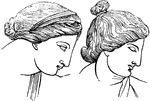
Venus and Diana
"Venus and Diana are generally represented with their hair dressed in the simple style of the young…
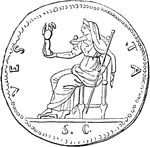
Coin of Vesta
"Represents Vesta seated on a throne, with the Palladium of Rome in her hand." — Anthon, 1891



